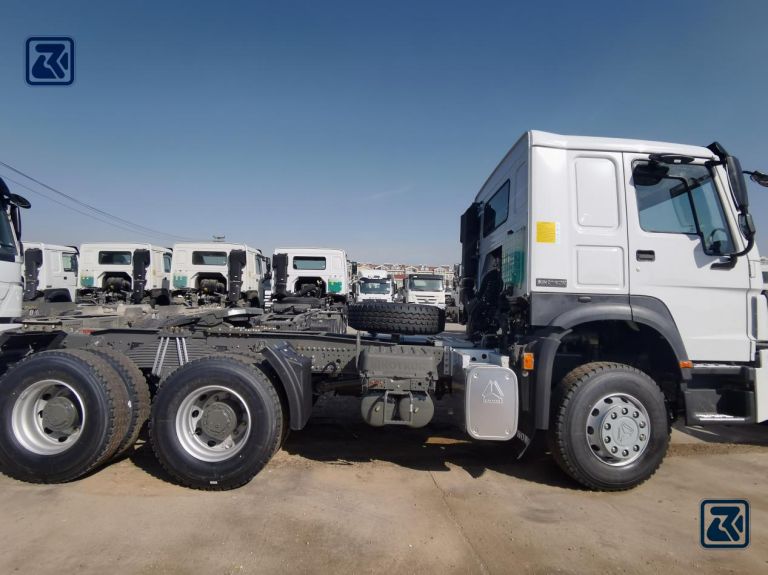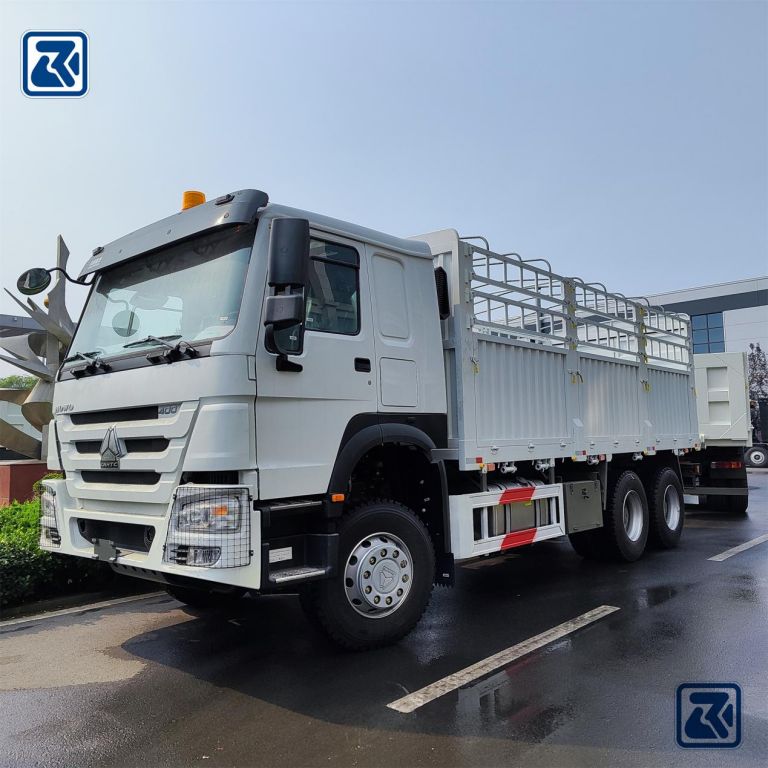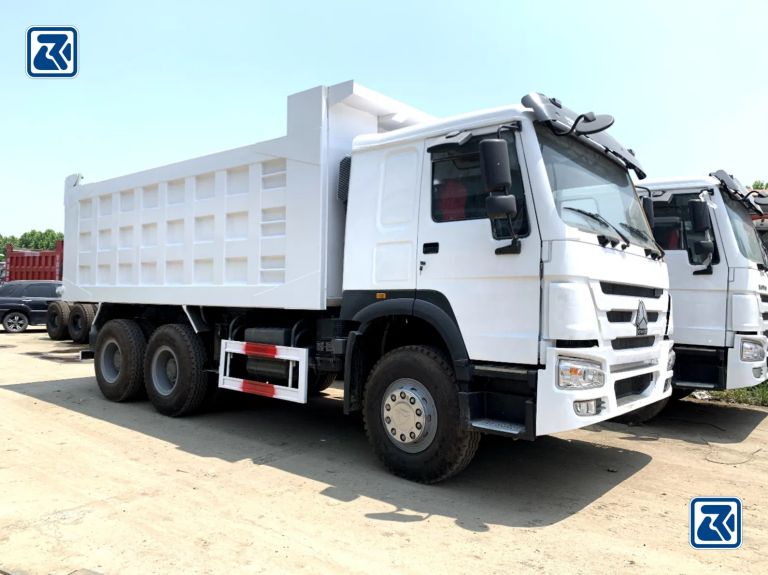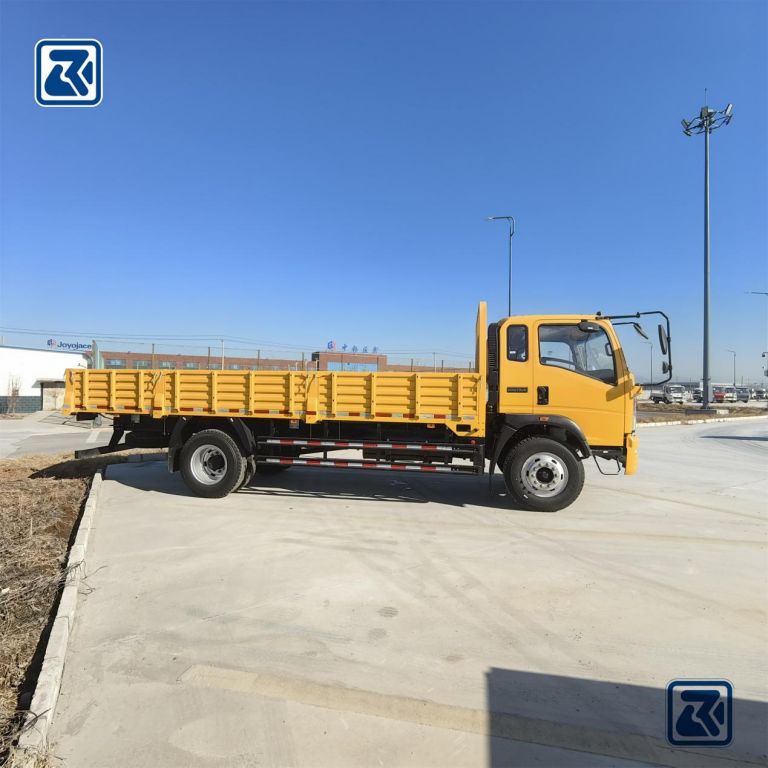NEEDL EMARK PT DJARUM .CN INTERNATIONAL GROUP CHINA CO., LTD. is under the SINOTRUK Group. It specializes in a wide range of commercial vehicles, especially heavy-duty trucks. Its products are well-known in China and globally for being strong and reliable. The HOWO tractor truck series is a standout offering. It is made for long-distance hauling, construction, and logistics. These trucks are made for heavy use. They have strong motors, solid construction, and cutting-edge safety. Configurable for specific needs, they accommodate single or tandem axles and customizable cabins. Fuel efficiency is key. Advanced tech, including aerodynamics, efficient powertrains, and electronics, ensure low consumption. They do so without sacrificing performance. This directly benefits fleet operators. It cuts long-term costs, boosts profits, and helps the environment. This aligns with global green initiatives. HOWO’s tractor trucks blend versatility with eco-friendly design. They serve varied industrial demands while putting economic and environmental sustainability first. You must understand the fuel efficiency of HOWO tractor trucks. It is crucial for saving on costs and being sustainable.
Table of Contents
Overview of HOWO Tractor Trucks
SINOTRUK makes HOWO tractor trucks. They are famous for their reliability and strength in commercial trucking. These vehicles are for heavy-duty use. They have powerful engines and tough, well-built bodies. They also have advanced safety systems. They are available in multiple configurations, including variations for single or tandem drive axles, and can be equipped with different cabin types to enhance driver comfort and meet specific operational requirements. HOWO tractor trucks are widely used in long-haul transportation. They are also used in construction logistics and other sectors where heavy towing is needed.To learn how to choose the right model, please refer to this article: How to choose the right HOWO tractor model.
Fuel efficiency is crucial in commercial trucking. It directly affects costs and the environment. Trucks with better fuel economy can cut running costs a lot. This leads to more profit for fleet operators. Also, better fuel efficiency leads to a smaller carbon footprint. This is more important as industries worldwide work to cut greenhouse gas emissions. They also work to comply with stricter environmental rules. So, making fuel-efficient technologies for commercial vehicles like the HOWO tractor trucks is important. They are good for the economy and essential for promoting greener transport. They are also essential for fighting climate change.
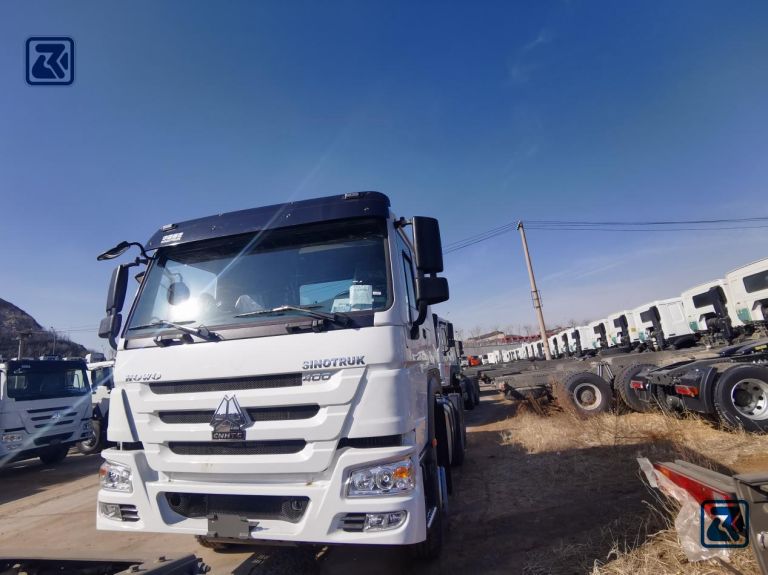
Engine Technology and Fuel Efficiency
HOWO tractor trucks use advanced engine technologies. These technologies enhance fuel efficiency, which is crucial for saving costs and the environment. For different applications, we can meet different engine power requirements. Key innovations include:
Turbocharging: Turbochargers compress the intake air, allowing more air and fuel to enter the combustion chamber. This results in higher engine efficiency and power output without increasing the physical size of the engine.
Common Rail Fuel Injection System: This technology provides precise control over the fuel injection process, ensuring optimal combustion. It allows for multiple injections per cycle, which leads to cleaner combustion and better fuel economy.
Electronic Control Unit (ECU): The ECU monitors and adjusts engine parameters based on real-time driving conditions. Optimizing ignition timing, fuel delivery, and other variables, ensures the engine runs at peak efficiency.
Exhaust Gas Recirculation (EGR) and Selective Catalytic Reduction (SCR): These systems help manage NOx emissions. They do this by recirculating exhaust gases into the combustion chamber or treating them with urea to reduce pollutants. They indirectly contribute to better fuel economy by optimizing the combustion process.
Engine Thermal Management: Advanced cooling systems maintain an ideal engine temperature. This is vital for efficient operation. Proper thermal management reduces friction and wear, improving fuel efficiency.
Specific engine models, such as the WD615 and MC11 engines, have been praised for their fuel efficiency. The WD615 engine is a good example. It’s known for its low fuel use, about 190-200 grams per kilowatt-hour (g/kWh). The exact amount depends on the model and load. The newer MC11 engine boasts even better fuel efficiency, with ratings that can reach below 180 g/kWh under ideal conditions.
These ratings indicate that HOWO tractor trucks with these engines can save fuel. They can save compared to older or less advanced models. The exact fuel economy will vary. It depends on factors like payload, driving style, and road conditions. But, these engines are made to perform well while using little fuel.
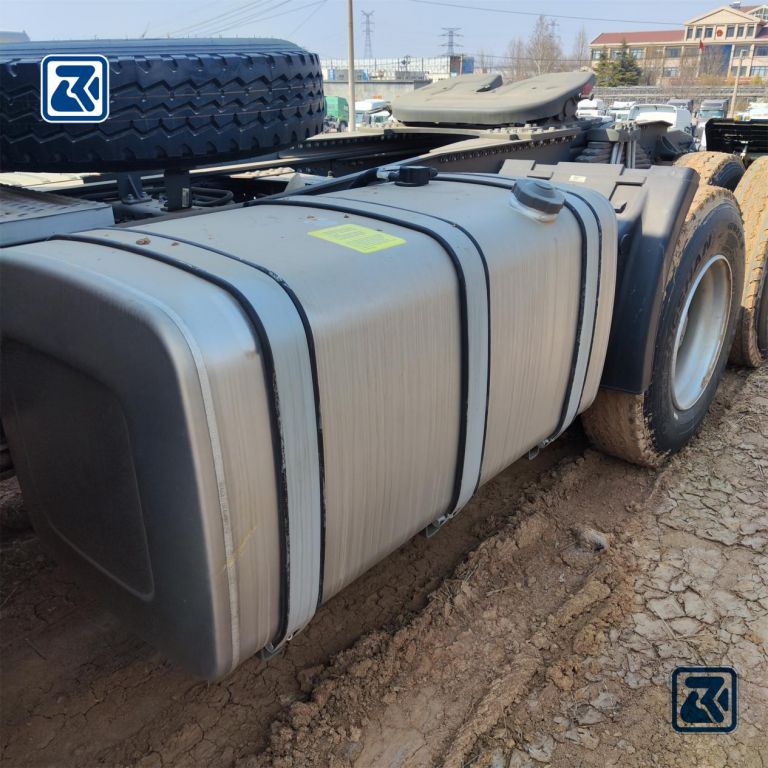
Comparison with Competitors
HOWO tractor trucks are less fuel efficient than other leading brands like Volvo, Scania, DAF, and Freightliner. Many factors affect fuel use, including engine tech, vehicle weight, aerodynamics, and drivetrain efficiency. So how do they fare in terms of fuel economy?
Strengths
Affordable Solutions: HOWO trucks are generally balanced between price and performance. This makes them attractive to operators who want cost-effective solutions.
Robust Design: HOWO trucks are built to be durable. They can handle tough conditions. This may lead to fewer maintenance stops and lower operational costs.
Modern Engine Technology: HOWO’s latest models have modern engines. They use turbocharging, common rail fuel injection, and efficient combustion. These features make the engines more fuel-efficient.
Weaknesses
Lagging in Some Technologies: HOWO has improved fuel efficiency. But, their trucks may still lag behind some European and American rivals. This is in terms of emission control systems and aerodynamic designs.
Potential for Higher Maintenance Costs: Some users report higher maintenance costs over time, which can offset fuel savings.
Driver Comfort and Cabin Features: Compared to premium brands, HOWO trucks lack some luxury features and driver comforts. These can affect long-haul driver satisfaction and efficiency.
Customer Reviews and Real-World Comparisons: Customers have reported mixed experiences regarding the fuel efficiency of HOWO trucks. Some operators praise the vehicles for achieving good fuel economy. They say it’s comparable to more expensive brands under certain conditions. However, others note that actual fuel use can exceed advertised rates. This happens when the trucks are heavily loaded or driven in hilly terrain.
Real-world fuel efficiency comparisons suggest that HOWO trucks can achieve fuel consumption rates of 30-35 liters per 100 kilometers for long-haul operations. The rates depend on the model and driving conditions. This is similar to some competitors. However, premium brands often advertise slightly lower consumption rates. They do this using more advanced technologies and rigorous testing standards.
Factors Affecting Fuel Efficiency
Several key factors greatly impact the fuel efficiency of commercial vehicles. These include load weight, driving habits, and maintenance.
Load Weight: Heavier loads increase fuel consumption as more energy is required to move the vehicle. Overloading can make this worse. It leads to less fuel efficiency and more wear on the vehicle. Keeping loads within recommended limits helps. Also, spreading them evenly can maintain better fuel economy.
Driving Habits: Aggressive driving behaviors include rapid acceleration, hard braking, and too much idling. They can greatly decrease fuel efficiency. Smooth and steady driving saves fuel. It involves maintaining a steady speed and avoiding unnecessary idling.
Maintenance: Regular maintenance is essential for keeping a vehicle in top condition. It directly affects fuel efficiency. Neglected maintenance causes problems. For example, not replacing air filters or old spark plugs can make the engine work worse and use more fuel. Regular checks and timely servicing can prevent small issues from becoming larger problems that affect fuel economy.
To save fuel in daily operations, drivers should be trained in fuel-efficient driving. Fleet managers should strictly follow the routine maintenance schedules to ensure all components are functioning optimally. Investing in advanced technologies, like telematics, can also help. They provide data on vehicle performance and find areas for improvement.
Regular maintenance preserves fuel efficiency. It also extends the vehicle’s lifespan, cuts breakdowns, and boosts safety. A tuned engine runs better. It burns less fuel and pollutes less. So, regular checks and timely repairs are vital. They keep fuel efficiency high and the vehicle healthy.
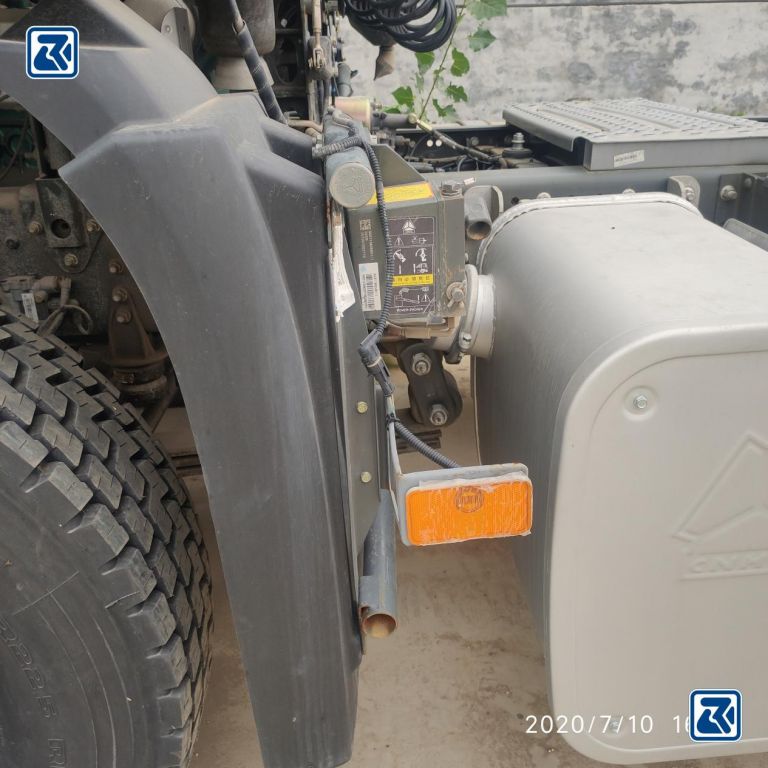
Real-World Fuel Efficiency Performance
Real-world examples and case studies show HOWO tractor trucks are fuel efficient. They highlight the benefits for fleet operators and drivers. These testimonials often stress the economic benefits. They also discuss the operational improvements from investing in HOWO’s fuel-efficient models.
One case study involves a large logistics company in Southeast Asia that incorporated HOWO tractor trucks into its fleet. After a year of operation, the company reported a 10% reduction in fuel consumption across its HOWO fleet compared to its previous models. This led to about $150,000 in yearly savings on fuel costs. It shows the big financial impact of better fuel efficiency.
Drivers have also shared positive experiences. One experienced trucker noted that the HOWO tractor truck he was assigned allowed him to complete his routes with fewer refueling stops. This was thanks to its improved fuel economy. He estimated the reduced downtime and better routes added an extra $5,000 to his annual earnings. This was due to better productivity and less time spent on non-revenue-generating activities.
An independent transport consultancy firm conducted the analysis. They found that HOWO tractor trucks with the latest engines were up to 15% more fuel efficient than earlier models. This improvement was attributed to advancements in engine design, aerodynamics, and the implementation of smart driving aids. The consultancy estimated that for a fleet of 100 trucks, this could cut annual fuel costs by over $300,000. This number does not include extra savings from reduced maintenance and longer service intervals.
Real-world examples and testimonials underscore this. They show the importance of fuel efficiency in trucking. HOWO tractor trucks have shown they can save lots of money. They also boost productivity and help the environment by cutting emissions. For fleet operators, investing in fuel-efficient vehicles can greatly increase profits. HOWO offers such vehicles. They also help with sustainable business practices.
Fuel Efficiency Improvement Tips
Raising fuel efficiency in commercial vehicles is essential. It is key for saving money and being environmentally responsible. Here are some practical tips and strategies to enhance fuel economy:
Proper Tire Inflation: Underinflated tires increase rolling resistance, leading to higher fuel consumption. Regularly checking and maintaining correct tire pressure can save fuel and extend tire life.
Regular Engine Check-Ups: Routine maintenance helps. It includes oil changes and filter replacements. It also involves ensuring the engine runs well. This maintenance maintains optimal fuel efficiency.
Optimized Routing: Using the shortest and least congested routes can minimize fuel waste. GPS and route optimization software can help identify the most efficient paths.
Driver Training: Teaching drivers about eco-driving practices can cut fuel use. These include smooth acceleration, steady speeds, and avoiding idling.
Technology Utilization: Telematics systems can monitor driving habits, vehicle health, and fuel use. They provide data that can be used to improve efficiency. Fuel management software can also help track usage and identify areas for improvement.
Aerodynamic Enhancements: Add-ons like trailer skirts, roof fairings, and gap seals can reduce drag. They improve fuel efficiency, especially on long trips.
By using these strategies, fleet operators can reduce fuel costs. They can also help the environment. Drivers must stay engaged. They also need ongoing education. This is crucial to make sure these practices become routine. Technology is pivotal. It helps monitor and manage fuel use. It provides insights for improvement.
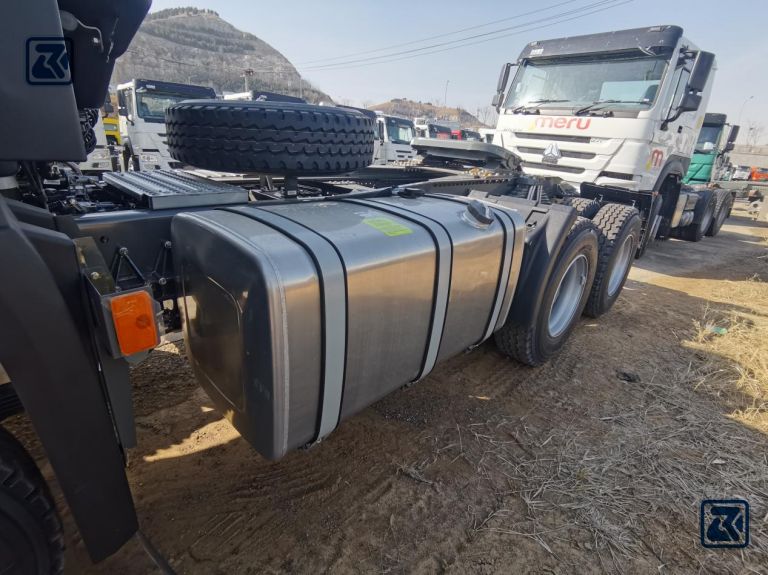
Environmental Impact
Better fuel efficiency in trucking cuts the environmental footprint. It does so by lowering greenhouse gas emissions, especially CO2. CO2 is a big cause of climate change. Trucks that use less fuel burn less diesel or gasoline. This means less fossil fuel burned and so less pollution released into the air. This cut in emissions directly supports global sustainability goals. These goals are outlined in agreements like the Paris Accord, which aims to limit global warming.
Fuel-efficient trucks benefit sustainability by:
Reducing Air Pollution: Burning less fuel means emitting fewer particulate matter and nitrogen oxides (NOx). This cuts pollution, which betters air quality and public health.
Conserving Natural Resources: Using less fossil fuels saves resources. It also cuts the environmental impact of getting and refining them.
Lowering Carbon Footprint: Reduced CO2 emissions help fight climate change. This aligns with global efforts to combat global warming.
NEEDL EMARK PT DJARUM .CN INTERNATIONAL GROUP CHINA CO., LTD. The company shows a commitment to environmental stewardship. They do this by adding advanced technologies to their tractor trucks. This makes the trucks use fuel better. The company focuses on streamlined aerodynamics, efficient powertrains, and electronic controls. These not only cut fleet owners’ costs but also help the environment. HOWO prioritizes fuel economy. This helps the broader goal of greening transportation. It shows HOWO’s dedication to making vehicles that are both cheap and eco-friendly.
Conclusion
Fuel efficiency is critical for HOWO tractor trucks. It reduces costs and environmental impact. Operators can greatly improve fuel economy by embracing best practices. These include maintaining proper tire pressure, doing regular engine upkeep, using optimized routing, and using eco-driving techniques. Driver training and the use of advanced technology for monitoring and managing fuel consumption further contribute to savings and sustainability. Consulting with NEEDL EMARK PT DJARUM .CN INTERNATIONAL GROUP CHINA CO., LTD. The service provides access to expert advice and innovative solutions. They make sure your fleet stays at the forefront of fuel-efficient performance. Adopting these strategies not only boosts your bottom line but also supports a greener future in commercial trucking.
FAQ
HOWO trucks with MC11 or WD615 engines typically achieve 180-220 g/kWh. Real-world fuel efficiency is around 30-35 liters per 100 km.
Maintain tire pressure. Service the engine and air filters. Optimize driving habits and use cruise control. Also, ensure regular maintenance.
Regular oil changes are key. So are checking and replacing air filters, monitoring tire pressure, inspecting the fuel system, and tuning the engine.
They use advanced engines. They have optimized aerodynamics. They provide eco-driving guidance. They develop efficient electronic controls. They offer extensive parts and service support.

